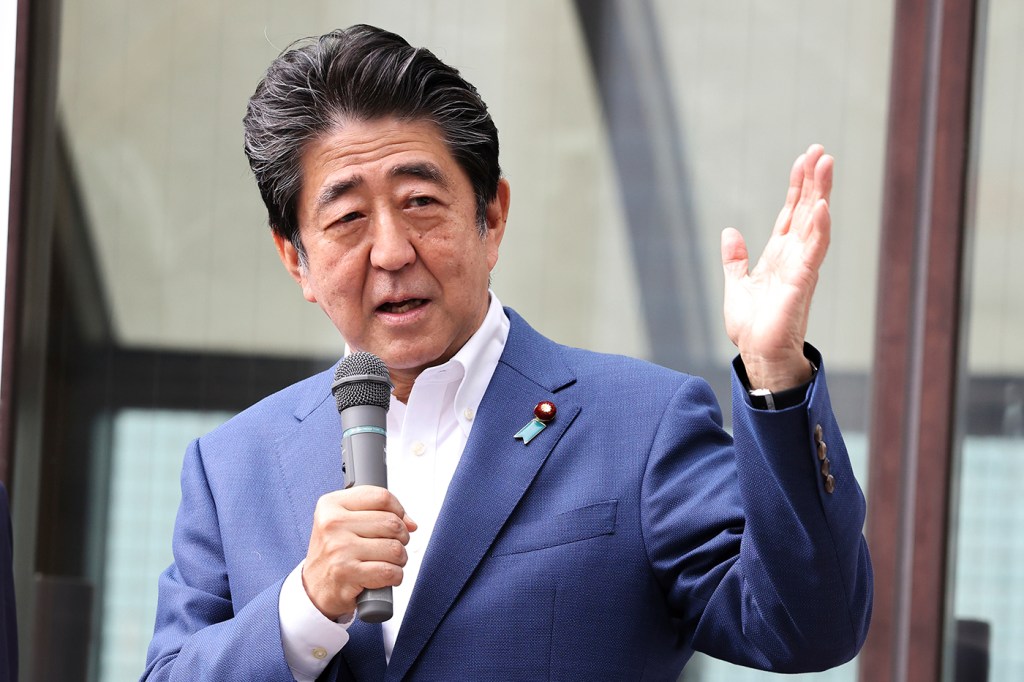Homemade weapon used to assassinate former Japanese prime minister. What does this mean for the country?

Former Japanese Prime Minister Shinzo Abe was assassinated at a rally on Friday, sending shockwaves through Japan and around the globe.
Abe, who was Japan’s longest-serving prime minister when he resigned in 2020, was shot by a lone gunman and died hours later. The alleged shooter used a homemade firearm, and was tackled and arrested, NPR reports.
“It’s shocking, and it’s tragic, and it’s complicated,” says Daniel Aldrich, professor of political science and public policy at Northeastern.
In the wake of Abe’s violent death, two Northeastern professors reflect on how an assassination could happen in a largely gun-free nation, and on Abe’s complicated legacy.
“It’s shocking because it’s just so unlikely,” Aldrich says.

Gun violence is rare in Japan, he says, as is gun ownership, making an assassination by shooting in Japan almost unthinkable. There were only nine gun homicides in Japan in 2018, compared to 39,740 in the United States, which has less than three times the population, CNN reports. There are only .25 guns per 100 people in Japan; in the United States, there are 120 per 100 people.
The low firearm homicide rate, as well as the fact that the gunman made his own weapon, is a testament to the fact that “gun laws and restrictions in Japan are quite strict,” says James Alan Fox, Lipman Family Professor of Criminology, Law, and Public Policy at Northeastern. Even obtaining a gun to hunt wild boar, the most commonly hunted animal in Japan, is an arduous process, according to Aldrich.
But even with strict gun laws, “That doesn’t prevent someone from making their own, whether it be by a kit or by a 3-D printer,” Fox says.
These homemade guns, also known as “ghost guns,” can be created using a 3-D printer, or they can be purchased as full kits online. According to Fox, the kit is not considered a gun until it is assembled, “so gun laws don’t apply,” at least in the United States. They also do not have serial numbers and therefore cannot be traced.

The shooter may also have made the gun from found supplies, Aldrich says.
Regardless of how he was able to get access to a firearm, the shooter’s actions had tragic consequences for one of Japan’s best-known public servants.
“Abe had done a lot of things for Japan,” Aldrich says, though, he says, Abe’s legacy is also complicated. Abe, who was Prime Minister from 2006 to 2007 and again from 2012 to 2020, was a right-leaning lawmaker, and was “less liked by those on the left.”
One of the more controversial moves during Abe’s tenure was his 2013 visit to the Yasukuni Shrine, which honors Japanese who have died in war, including 14 Class A war criminals from the World War II era. This visit, Aldrich says, was not well received by leftists in Japan.
“Going to Yasukuni was like a bellwether in politics,” he says. “If you went there, typically you were more right wing, showing less remorse about Japan’s militaristic past. So he angered a lot of people.”
Abe also was known for his unsuccessful attempt to move the country away from strict pacifism by modifying Article Nine of the country’s constitution.
Written during the American occupation in 1946, the constitution was drafted with the intent of transitioning Japan from its militaristic past following its role in World War II. Article Nine states that Japan should not have a standing army for use against other countries, but Aldrich says that Abe’s aim was to make Article Nine “a little more open to interpretation.”
At the same time, Abe made positive contributions to the country. Abenomics—a term describing Abe’s economic policies during his time as prime minister—is largely credited for getting Japan out of a recession, Aldrich says. He is also remembered for helping introduce more women and foreign workers into the workplace.
Abe was still influential in Japanese politics at the time of his death, and was “kind of a kingmaker behind the scenes,” Aldrich says. At the time of the assassination, Abe was promoting other members of his political coalition in advance of an upcoming election.
Despite his influence, Abe’s death will have little impact on the country politically, though it may bring in “sympathy votes” for the candidates he endorsed, Aldrich says. “Ironically, this will just solidify the power of the long-standing Liberal Democratic Party” of which Abe was a part, Aldrich says.
Still, his death will be remembered as a significant—and unprecedented—moment in Japanese history. “This is really an anomaly,” says Aldrich. “This is not normal politics.”
For media inquiries, please contact Alexa Kummrow at a.kummrow@northeastern.edu or 617-373-3102.






